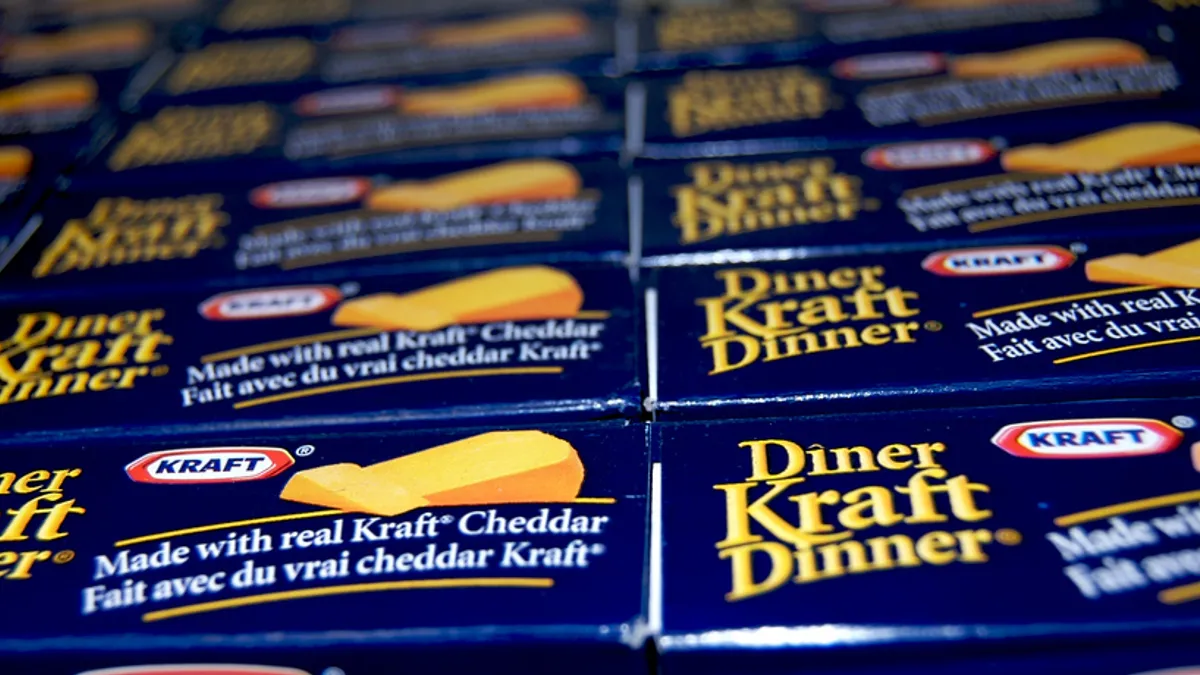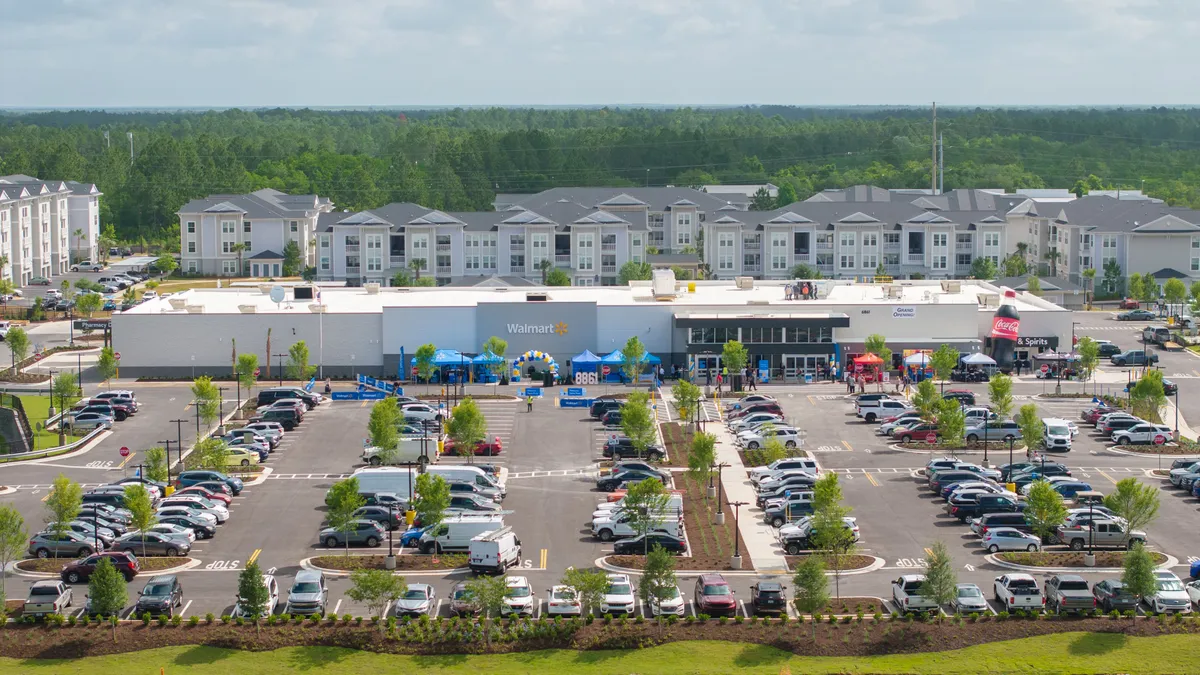Dive Brief:
- As Amazon's footprint in grocery increases, experts believe the company will exert further pricing pressure on manufacturers, according to Bloomberg.
- Industry observers also agree that acquiring Whole Foods will help Amazon increase its assortment of private label products, making it less reliant on national brands.
- CPG brands are quickly adjusting. Campbell recently hired a former Amazon employee to lead its e-commerce efforts. In addition, Mondelez has stepped up its online efforts and hopes to sell $1 billion worth of products online by 2020.
Dive Insight:
The day news of Amazon’s $13.7 offer for Whole Foods broke, the stocks of the ten largest U.S. food companies — among them Kraft Heinz, Campbell Soup and General Mills — lost a combined $8 billion in market value, according to Bloomberg.
Wall Street appears to have immediately reached a consensus about the implications of Amazon’s grocery surge on suppliers. As the company increases its sales in the industry, it also increases its leverage over CPG manufacturers. Like Walmart, Amazon is expected to use its clout to push suppliers toward lower prices and greater efficiencies.
At the same time, many expect Amazon to reduce its reliance on national brands by expanding its private label portfolio. The e-commerce giant has a small number of private label grocery brands, and could greatly expand that assortment with Whole Foods’ guidance and store availability in its arsenal. The real prize might be Whole Foods’ highly successful 365 brand, which Amazon could further develop and sell through its site.
Amazon doesn’t have a history of playing nice with brands, so it’s not hard to imagine it becoming even more demanding as it expands in grocery. Because the company accounts for significant sales, manufacturers will have to adjust — and many already are. Some CPG companies have hired former Amazon workers, while many others are optimizing their packaging and delivery capabilities. According to a recent New York Times story, a cottage advertising industry has sprung up around improving company's product listings on Amazon.
CPG companies also are looking for ways to sell directly to consumers. Mondelez, which is a third of the way towards its goal of selling $1 billion worth of products online by 2020, had a recent success with limited-edition holiday Oreos in special tins. Kellogg recently launched a build-your-own granola tool with its Bear Naked brand. Cutting out retailers like this delivers better margins and a more intimate brand experience, but drawing consumers away from traditional retail channels can be a challenge.
The root problem for CPG companies is that they are moving too slowly to keep up with consumer demand. Their canned, packaged and processed products, while reliable, have become irrelevant to consumers seeking freshness and unique flavors. These companies are quickly innovating and acquiring smaller players, and in time they may recapture consumer interest. But for now, they are getting squeezed from all sides and face a tough road ahead with Amazon set to ramp up its presence in the grocery space.










